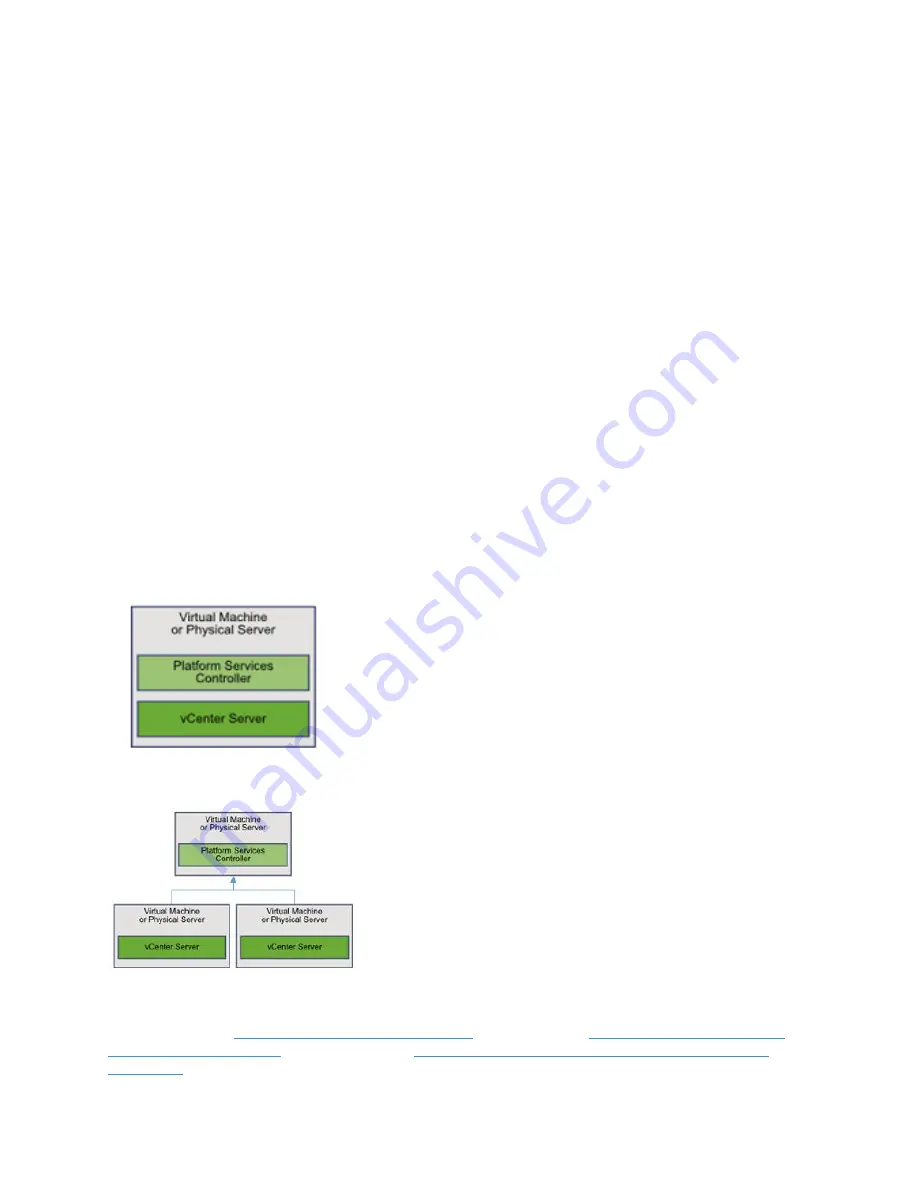
3 | vCenter Planning Guide
© 2019 Dell Inc. or its subsidiaries.
Intended Use and Audience
This guide discusses various VMware vCenter Server
™
deployment scenarios supported to manage your
VxRail Clusters. It is intended for customers, Dell EMC Sales Teams and field engineers involved in selling,
planning and installing VxRail, including Dell EMC sales and support personnel.
vCenter Server
vCenter Server is the centralized platform for managing a VMware environment. It is the primary point of
management for both server virtualization and vSAN and is the enabling technology for advanced capabilities
such as vMotion, Distributed Resource Scheduler (DRS) and HA. vCenter scales to enterprise levels where a
single vCenter can support up to 1000 hosts (VxRail nodes) and 10,000 virtual machines. vCenter supports a
logical hierarchy of datacenters, clusters, and hosts, which allow resources to be segregated by use cases or
lines of business and allow resources to be moved as needed dynamically. This is all done from a single
interface.
vSphere 6.0 introduced vCenter Server with embedded Platform Services Controller (PSC) as well as vCenter
Server with an external PSC. The following components are included in the vCenter Server installations:
•
The PSC group of infrastructure services contains vCenter Single Sign-On, License service, Lookup
Service, and VMware Certificate Authority.
•
The vCenter Server group of services contains vCenter Server, vSphere Web Client, Inventory Service,
vSphere Auto Deploy, vSphere ESXi Dump Collector, VMware vSphere Syslog Collector on Windows
and VMware Sphere Syslog Service for the vCenter Server Appliance.
vCenter Server with an Embedded PSC
vCenter Server with an External PSC
For details, refer to
vCenter Server Installation and Setup
for VxRail 4.7.0+,
vSphere Installation and Setup
Guide VMware vSphere 6.5
for VxRail 4.5.0+, or
vSphere Installation and Setup Guide Update 2 VMware
vSphere 6.0
for VxRail 3.5 and VxRail 4.0.x.
The vCenter Server and the Platform Services Controller
are deployed on a single virtual machine or physical server.
The vCenter Server and the Platform Services Controller are
deployed as separate virtual machines or physical servers.
The Platform Services Controller can be shared across several
vCenter Server instances. You can install a Platform Services
Controller and then install several vCenter Server instances
and register them with the Platform Services Controller. You
can then install another Platform Services Controller,
configure it to replicate data with the first Platform Services
Controller, and then install vCenter Server instances and
register them with the second Platform Services Controller.






























